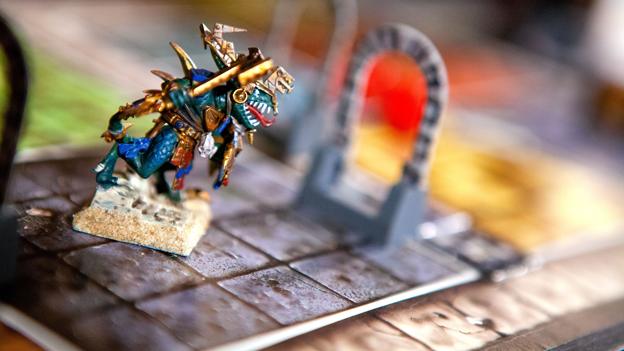What was behind the garrotting panics of London?
- Published
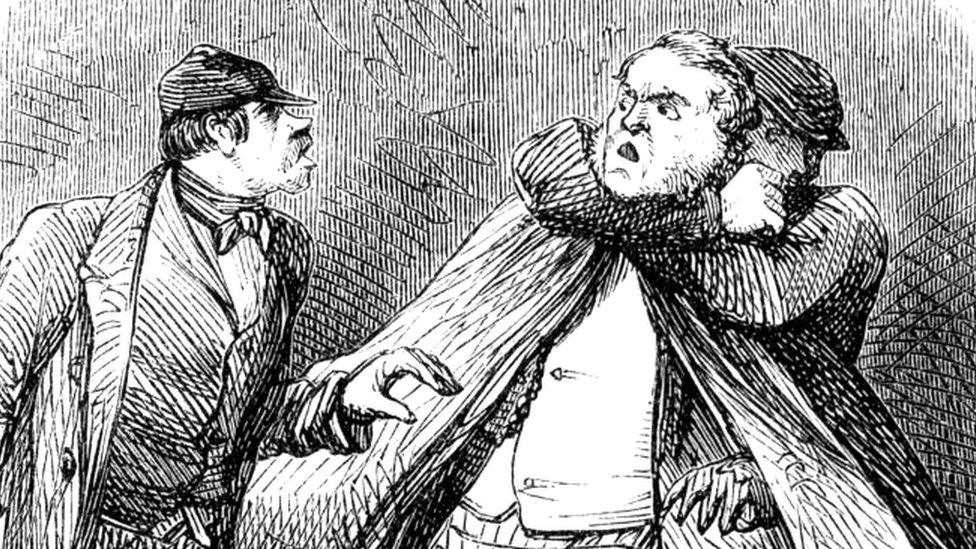
A robber seizes a man from behind while his companion threatens him with a club
The 19th Century saw London become the world's biggest city. Railways, industry and immigration all swelled the ranks.
And, with the ending of transportation to Australia, criminals also increased the capital's population.
Amid the turmoil caused by this, a new variant of robbers became the most feared - garrotters.
Now commonly used to describe the use of an implement to kill a person by strangulation or throat-cutting, garrotting then was roughly synonymous with today's "mugging".
In a garrotting, the assailant uses his forearm to grab the victim around the neck from behind, and an accomplice pilfers the pockets of the garrotted gent.
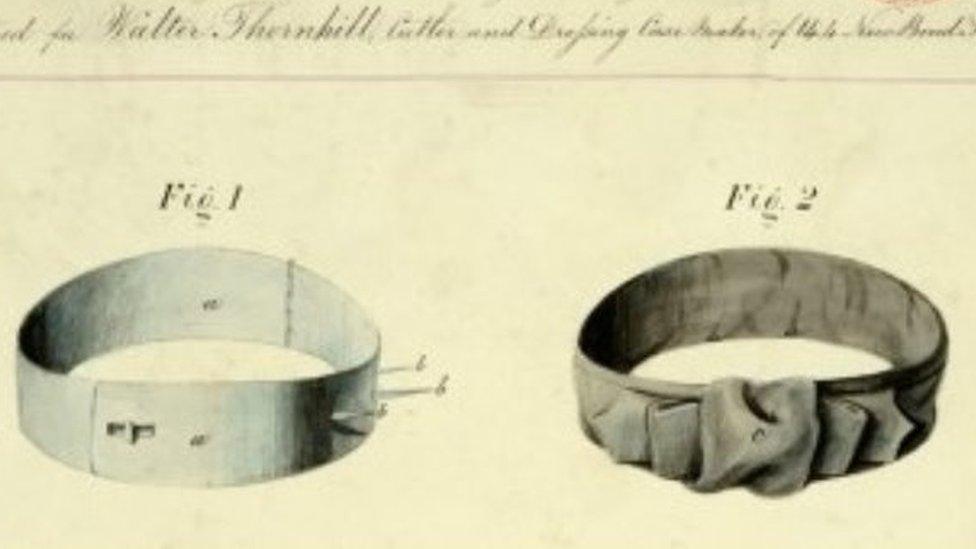
A design for an anti-garrotting cravat, registered by Walter Thornhill, cutler and dressing case maker, London, December 1862
Reports of garrotting soared, and social commentators began warning of "no-go" areas of London - something that's also a feature of the discourse in 2024 - through which almost nobody could pass un-garrotted.
The problem with this terror was that most it was manufactured, whipped up by a media frenzy.
How did it reach such frenzied heights? Much like the suggestion that video games cause violence, or that the satanic abuse of children is widespread, it was an example of a moral panic fed in part by fear.
There are grains of truth in all moral panics - there really were more convicted criminals on the streets after transportation to Australia dwindled in the 1830s.
The new system being tested was the release of prisoners before the end of their sentence, furnished with a document of parole - and at more or less the same time that these new certificates were issued, a new category of wares was being advertised.
The discerning gentleman was being asked to buy anti-garrotting devices to be worn upon the person.
Satirical publications of the day joined in with the phenomenon, with "products" becoming increasingly ridiculous.
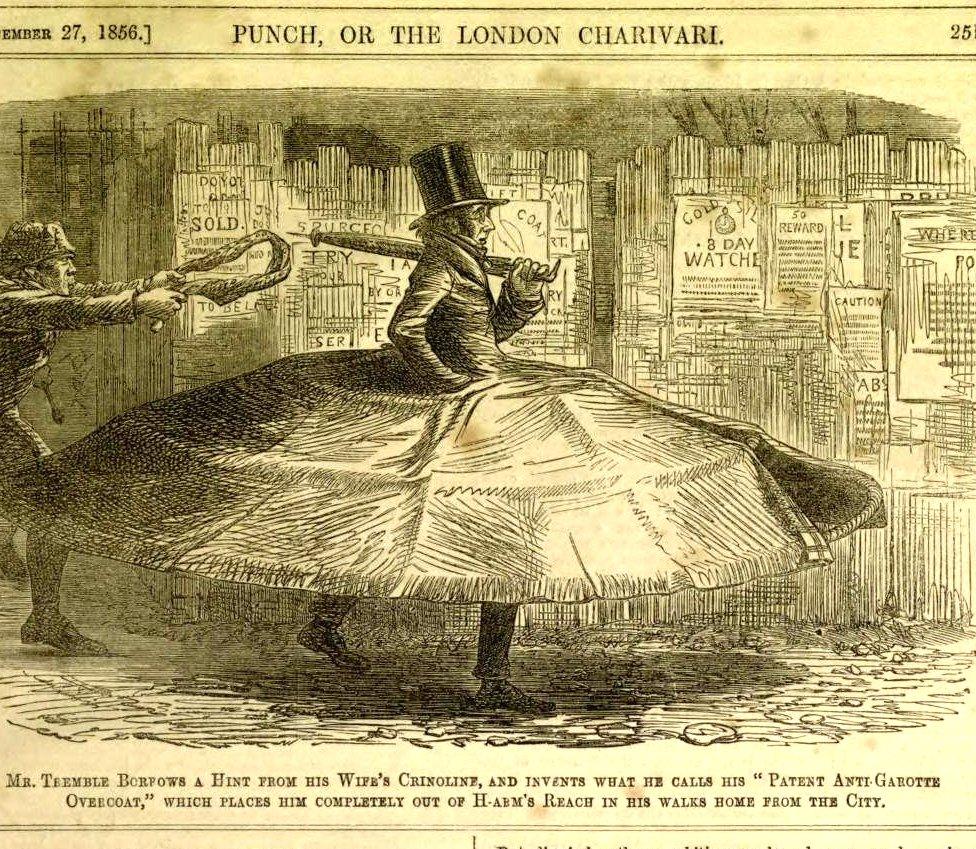
In December 1856, a cartoon in the humorous magazine Punch suggested a novel use for the new-fangled crinoline frame, adapted to become a "patent anti-garotte overcoat"
Crime statistics (although, as ever, flawed because of underreporting) indicate that violence in the 1850s and 60s was fairly low. About 75% of offences involved petty theft.
The Metropolitan Police Force formed in 1829 and many streets had gas lamps, both of which did their part in reducing crime.
There was a surge in the number of newspaper reports about garrotting, unmatched by the number of garrotting incidents happening on the streets.
They promoted the idea of a professional and identifiable criminal class: men who through immorality and laziness, had chosen to pursue a criminal career over honest employment.
Some journalists wrote that these habitual criminals could not be reformed, and must be controlled by criminal justice policy.
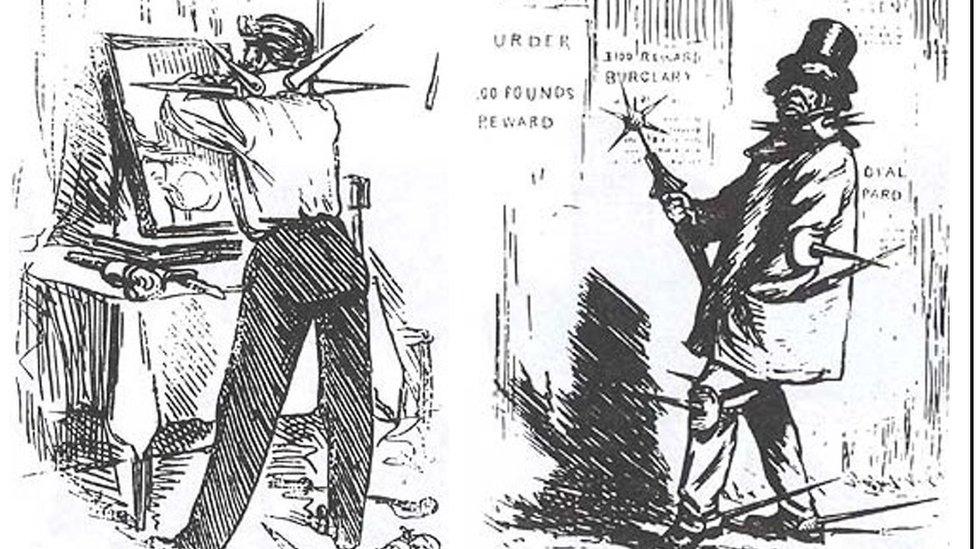
Anti-garotte wear as lampooned by Punch. Spikes seem to feature heavily
The press blamed a soft penal system, the cessation of transportation to Australia, and the increasing numbers of prisoners released on parole under the ticket of leave scheme, external (one of the first uses of release on licence for prisoners in the UK).
The Times newspaper ran a number of editorials that indicated the garrotters, "work-shy savages with a propensity for gratuitous violence", had left the back streets and were targeting more affluent thoroughfares.
In November and December 1862, the Times continued to stoke the panic - printing 18 editorials calling for the return of transportation.
It continued to blame the legal system, claiming that "the whole of this great and most expensive judicial hierarchy seems to be established solely to catch thieves and let them go again".
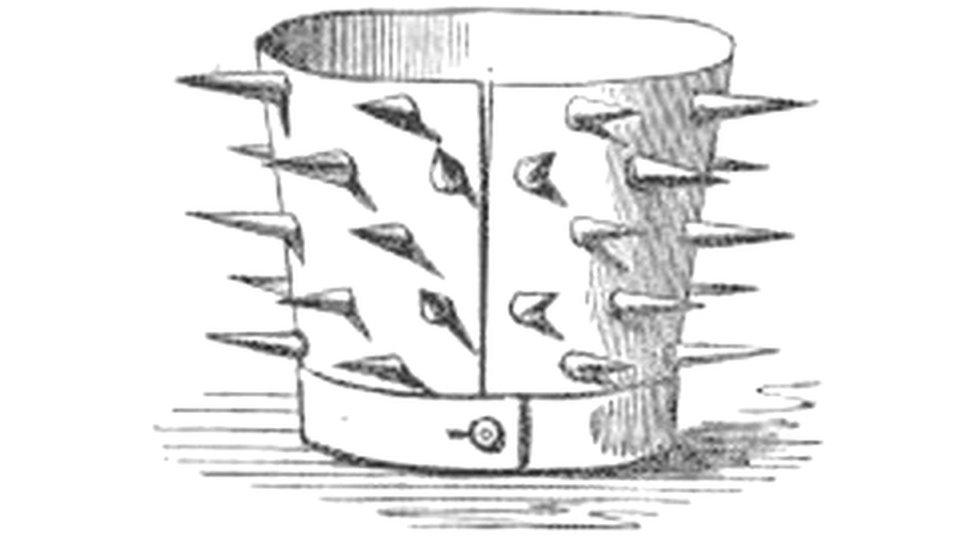
"Try our Patent Antigarotte Collar, which enables Gentlemen to walk the streets of London in perfect safety at all hours of the day or night" satirical paper Punch said
The middle classes descended into a moral panic based on these reports. All the Year Round, a weekly literary magazine founded and owned by Charles Dickens, joined in the debate by questioning whether garrotting was "un-British".
The idea of a foreign influence was fuelled by sensational press comments such as "the Bayswater Road is as unsafe as Naples".
Englishmen and women would much rather be mugged by a smartly dressed highwayman, the narrative implies.
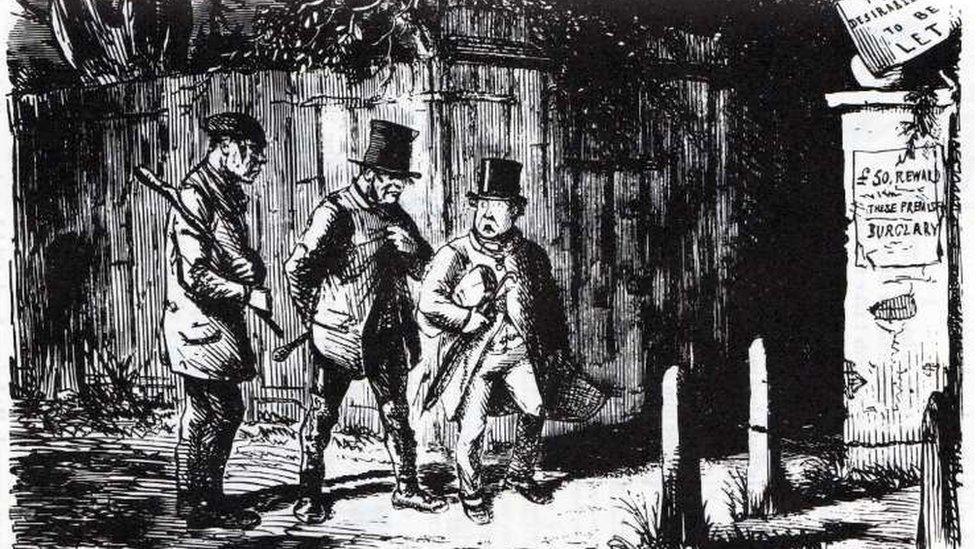
This was captioned A Suburban Delight and shows two rough-looking men asking to accompany the third as they were "precious feared o'bein' GAROTTED!"
The furore began to die down as other events took over the news agenda - until in 1862, an MP, Hugh Pilkington, was garrotted and deprived of his pocket watch as he walked down Pall Mall.
It revived the story in newspapers and also triggered a spate of anti-garrotting products - both real and spoof.
The letters pages of the Times hosted correspondence from men who thought they had the answers.
This, from an apparently hat-obsessed clergyman, said:
"As I was walking this evening (Thursday) at 6-o'clock through Temple Bar, two young fellows, respectably attired, passed by and one aimed a blow at my hat with a view to knock it off. Immediately after, another gentleman was struck, and his hat dashed to the ground.
"After a desperate resistance and the friendly aid of two working men, one of whom lost his hat in the affray, I succeeded in detaining one for some five minutes, until the arrival of two policemen.
"Had I a lady with me she would have undoubtedly been much terrified."
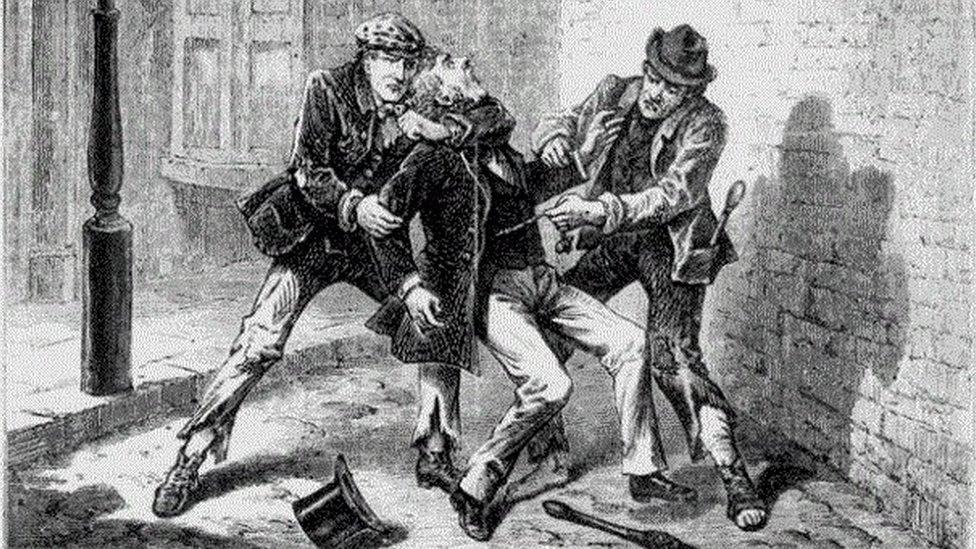
This charming scene is called "a daring case of garrotte robbery"
And this epistle, written in 1856 from someone who "felt not the least desire to lose my purse or jeopardize my limbs" details a weapon "without which at night I now never stir from my house."
"One single movement of the arm in a struggle and the assailant must let go his hold, and if his face be but once caressed with it ever so gently, I think you will I admit that even his own mother would not recognize him.
"Of course, it would be impolitic to give an exact description of the weapon; but a few words thereon from your able pen, in parenthesis, at the end of this letter, if you think it worth inserting, may perhaps serve as a warning to these 'children of the mist'."
The editor leaves the requested feedback: "The weapon is certainly one likely to leave such ugly marks on any garrotter as must speedily lead to his detection".
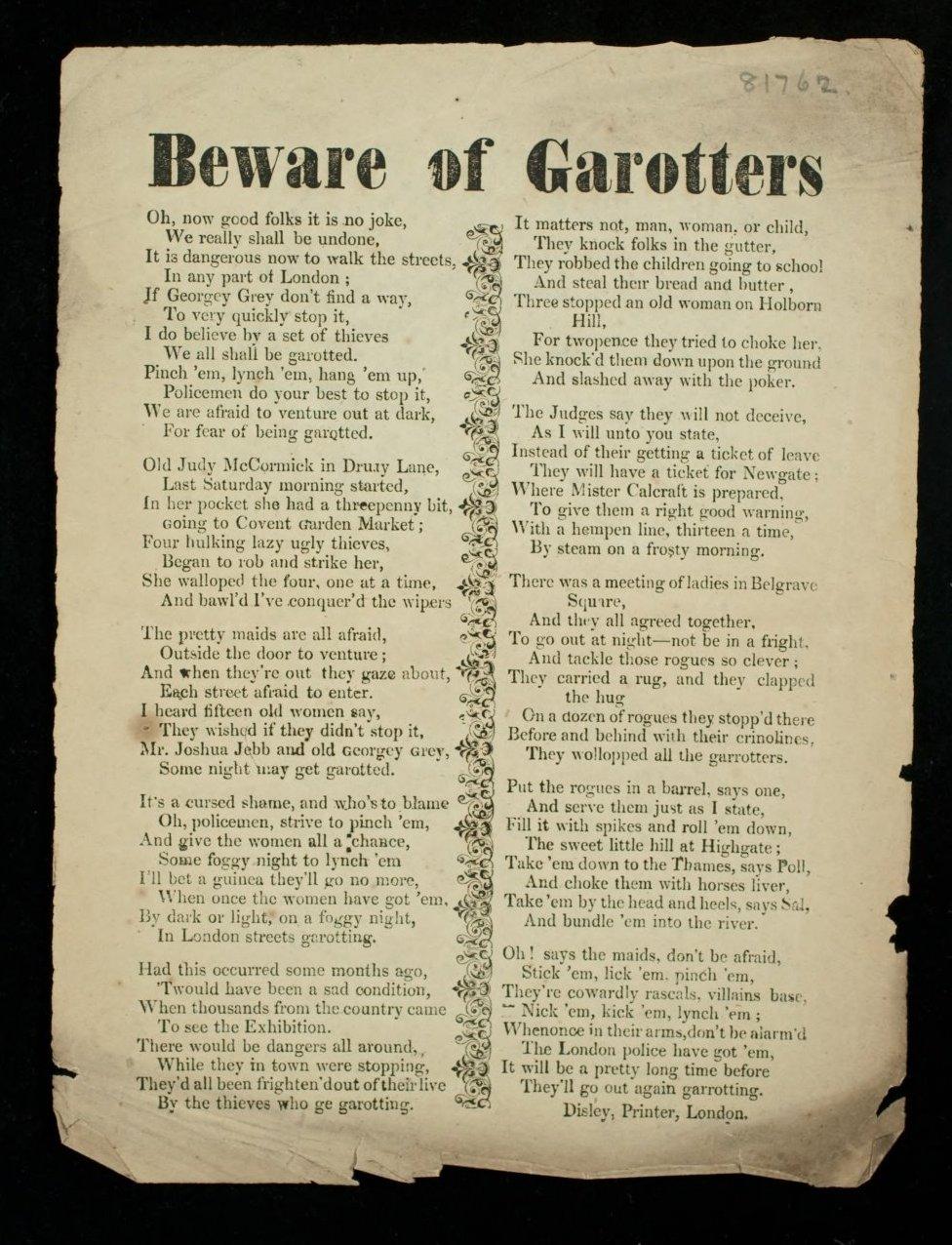
A number of songsheets were printed about garrotting
The police were portrayed as generally ineffective, and campaigners for prison reform - such as Home Secretary George Grey - were thought to be "soft on criminals".
The panic had the effect of bringing about hastily contrived legislation.
The Royal Commission on Penal Servitude and Transportation in December was set up in 1862 to review the prison situation and determine if transportation should be reintroduced.
In 1863, the Garrotter's Act, (officially the Security from Violence Act) restored flogging for those convicted of violent robbery.

An 1862 Punch cartoon satirised the "soft" ticket of leave scheme. A convict is released by a friendly jailer having been fed up to a generous weight
Cornhill Magazine, a monthly Victorian journal which in the 1860s was under the editorship of William Makepeace Thackeray, ran a piece in 1863 called The Science of Garrotting and Housebreaking.
It described garrotting as "an epidemic, like a new plague" and speculated the technique was learned from prison guards who would corral their wards in such a way.
"They consort in companies of three - a 'front stall,' a 'back stall,' and a 'nasty man'.
"The front stall walks a few yards in advance of the prey; it is his duty to look out for dangers ahead. The back stall comes on at a still further distance behind - aloof, but at the victim's side.
"Immediately in his rear walks the nasty man, approaching nearer and nearer, with steps which keep time with those of him whom he follows.
"The first stall lifts his hat from his head in token that all is clear beyond; the second stall makes no sign to the contrary; and then the third ruffian, coming swiftly up, flings his right arm round the victim, striking him smartly on the forehead.
"Instinctively he throws his head back, and in that movement loses every chance of escape."
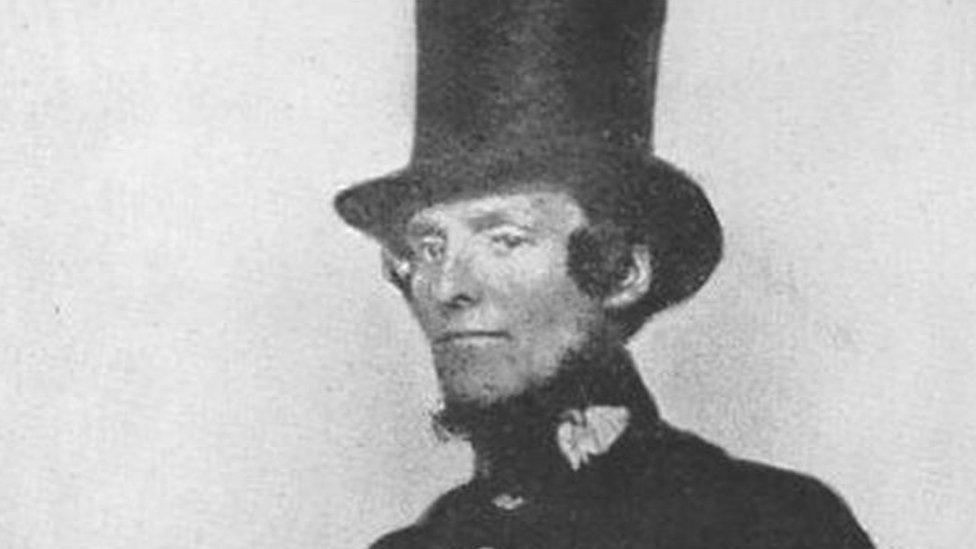
The Met, founded in 1829, had a uniform with a high collar to protect officers' necks and a reinforced top hat which could be used as a step to climb or see over walls
The Royal Commission's recommendations were implemented via the Penal Servitude Act 1864. Three and four-year jail sentences were abolished and replaced by five-year minimum terms.
The Act also compelled the police to monitor prisoners released on licence.
The police responded by redefining some minor offences as garrotting and treating them with the same severity.
So, with more draconian laws brought in and the police's duties made more onerous, the garrotting panic faded.
Of course there were more to come - just around the corner was a moral panic about cheap paper, external tempting youngsters into a life of crime.

Listen to the best of BBC Radio London on Sounds and follow BBC London on Facebook, external, X, external and Instagram, external. Send your story ideas to hello.bbclondon@bbc.co.uk
Related topics
- Published21 June 2018

- Published10 January 2018

- Published11 April 2014
